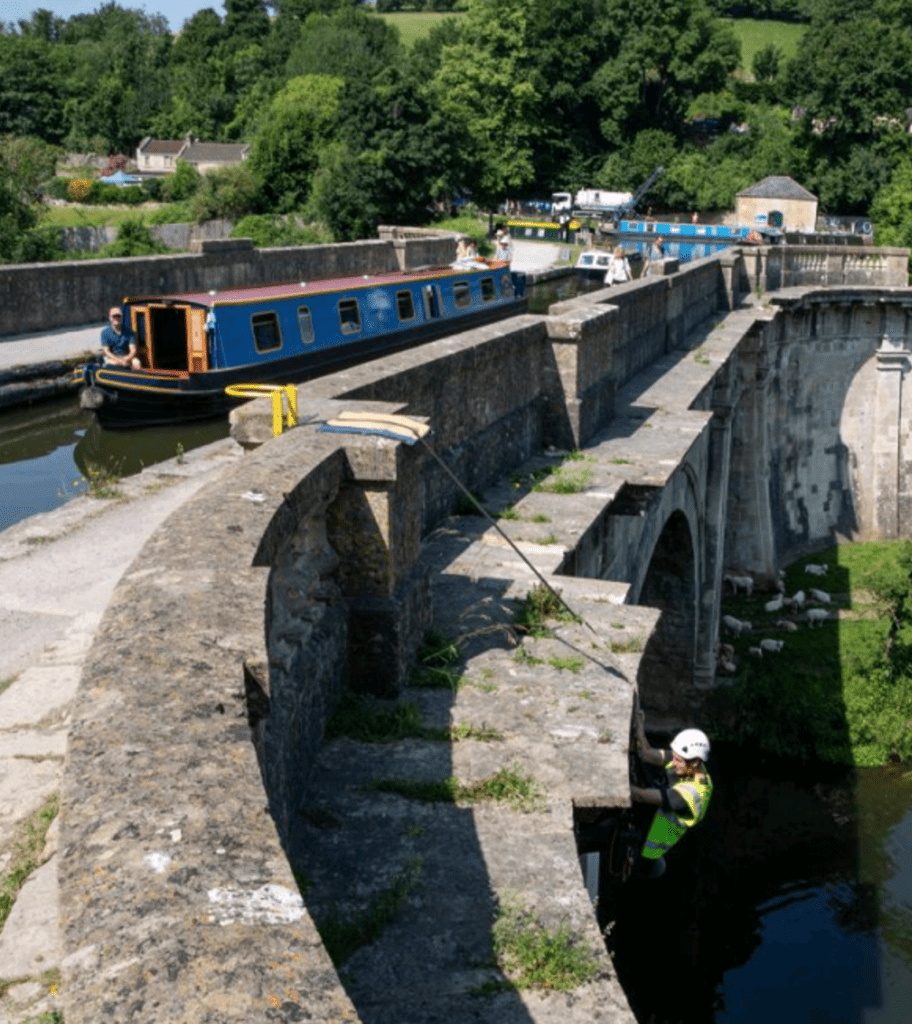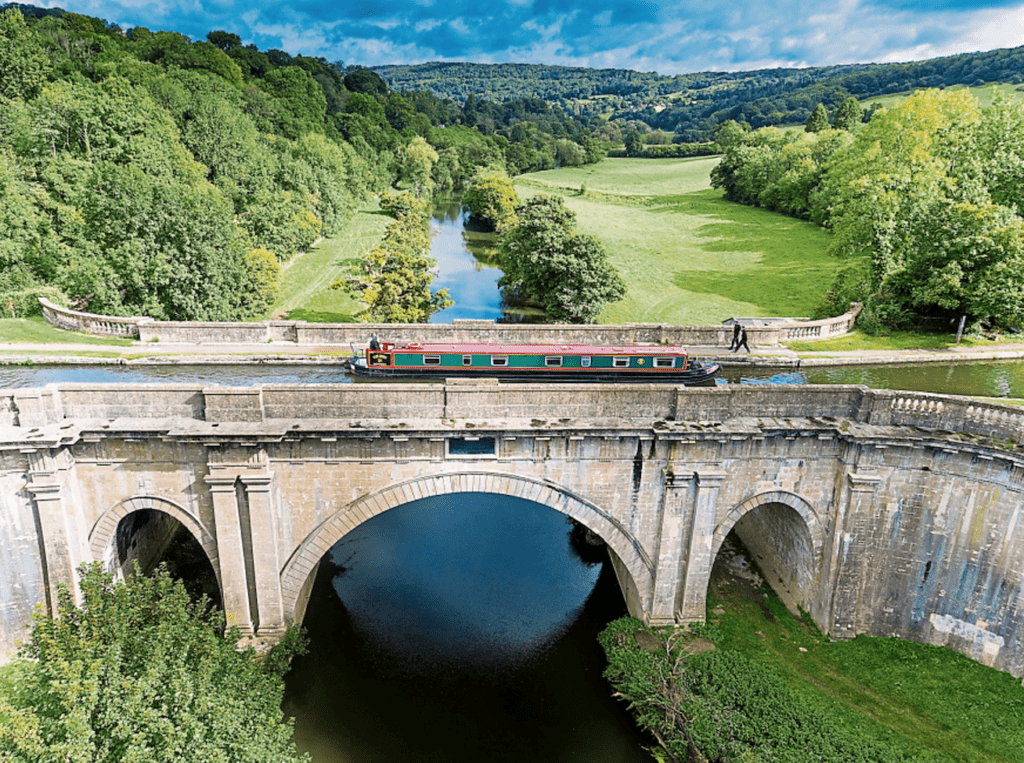A SPECIALIST abseiling team has been working with the Canal & River Trust to repair the historic Grade I listed Dundas Aqueduct on the Kennet & Avon Canal near Bath.

Suspended on ropes 12m (40ft) above the Avon Valley, the team of stone masonry conservators are carrying out specialist conservation repairs to the Georgian Bath stone mouldings of this iconic structure.
Decades of exposure to the elements have left their mark, with some mouldings showing signs of cracking caused by freeze and thaw damage. Extensive restoration work was carried out in the early 2000s but the elements continue to take their toll on the fragile carved and decorative stonework of the classical detailing.
Morgan Cowles, Canal & River Trust heritage and environment manager, explained: “For decades this elegant structure carried narrowboats bearing coal, timber, Bath stone and other goods between Reading and Bristol. Commenced in 1796 it was built to take the canal across the Avon Valley, thus allowing a nine-mile long stretch from Bath to Bradford on Avon be completed without locks.

“In 1954 it developed a leak and was taken out of use. In the 1960s and 70s it was completely drained, meaning people were able to walk along it. It was re-opened, complete with water, in 1984 and since then has taken on a new life, welcoming hundreds of leisure and lived-on boats to gently cruise along its 140m length.”
He continued: “The Canal & River Trust is conserving the aqueduct for future generations and ensuring it survives another 200-plus years to give more people the chance to enjoy life by water on this stunning piece of canal history.”
(columba strachey dundas)
Abseiling conservator Columba Strachey working on the Dundas Aqueduct.
PHOTO: ANNA BARCLAY/CRT
Box out
Pic (Dundas aqueduct)
Dundas Aqueduct was named after Charles Dundas, the first chairman of the Kennet & Avon Canal Company. In 1951 it became the first canal structure to be designated as a Scheduled Ancient Monument and is also designed as a Grade I Listed Building.





